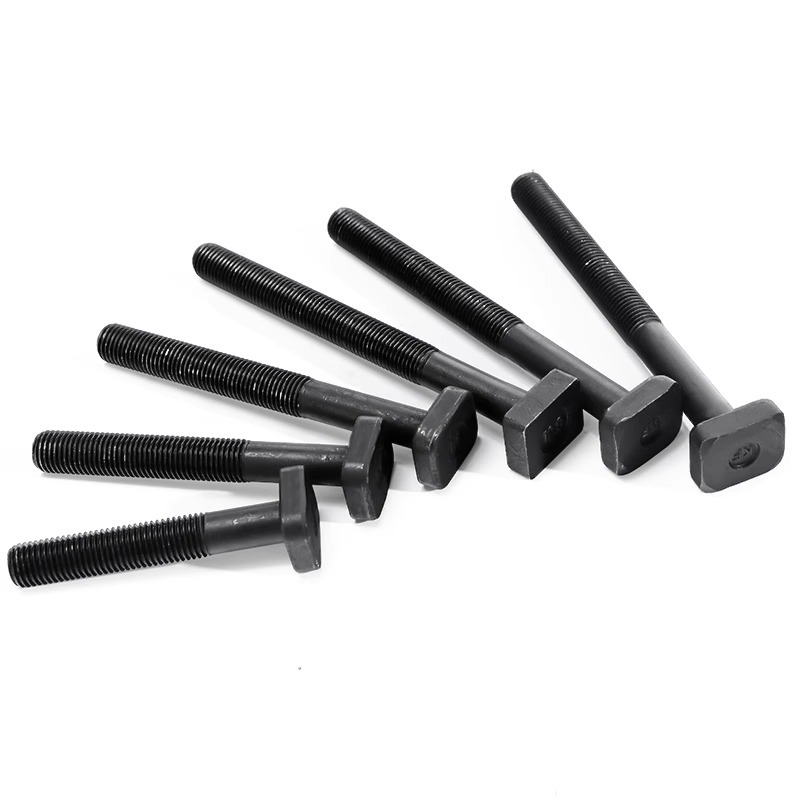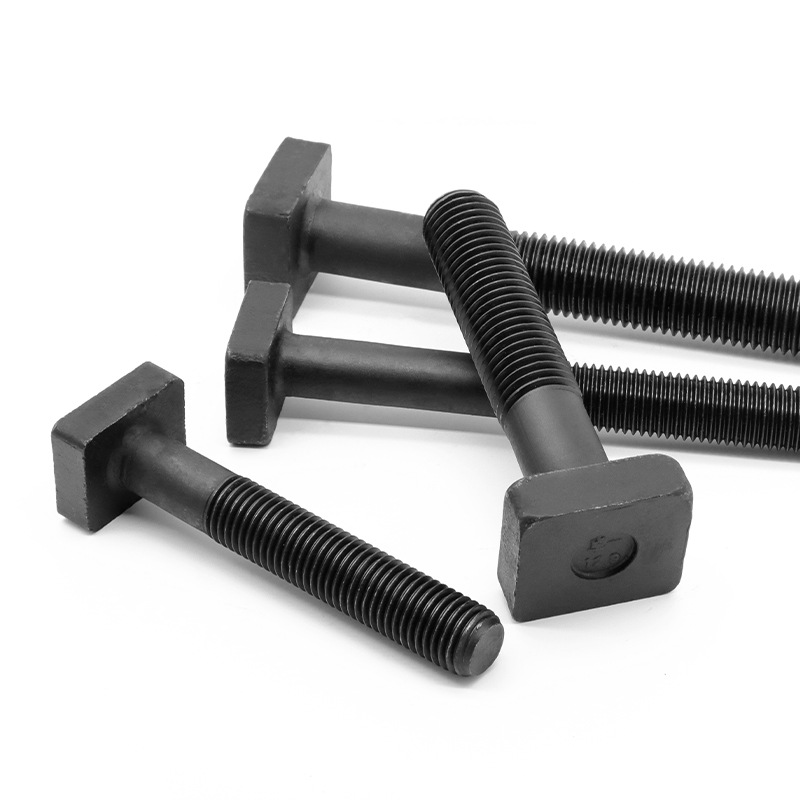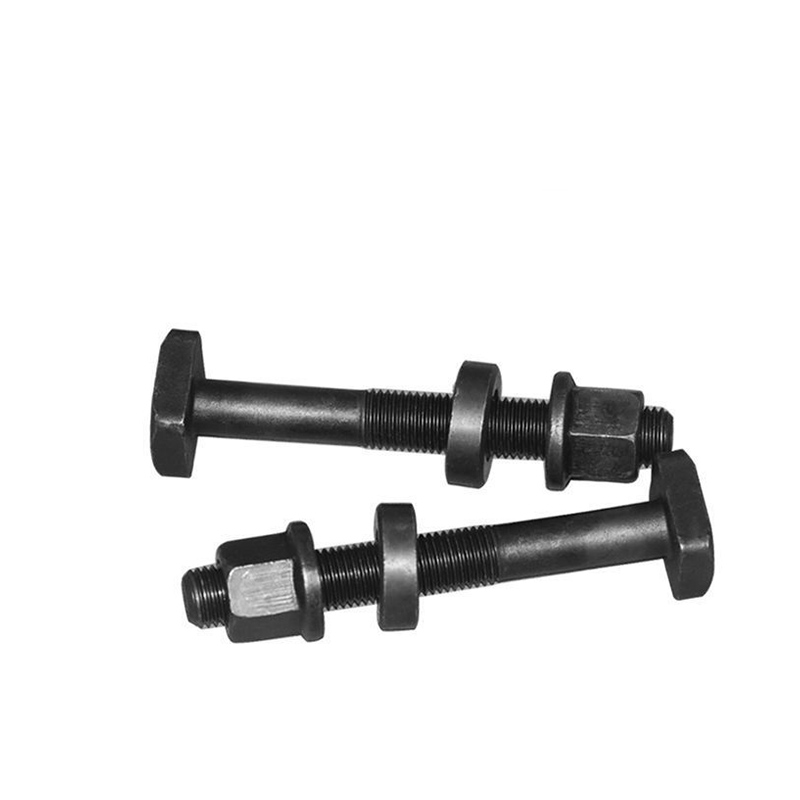A Comprehensive Guide to Purchasing Square Head Bolts
When it comes to heavy-duty fastening applications where high torque and a secure fit are paramount, few components are as reliable as the Square Head Bolt. For engineers, procurement managers, and DIY enthusiasts tackling demanding projects, selecting the right bolt is critical to the integrity and safety of the final assembly. However, navigating the specifications and options can be complex.
This guide draws on decades of industrial fastening expertise to outline the critical factors you must consider before purchasing Square Head Bolts. We will delve into the essential product parameters, material choices, and application-specific advice to ensure you make an informed decision.
Table of Contents
-
Understanding the Square Head Bolt: An Overview
-
Key Product Parameters to Scrutinize
-
Dimensions and Thread Specifications
-
Material Composition and Properties
-
Mechanical Strength Grades
-
Surface Finishes and Coatings
-
-
Choosing the Right Square Head Bolt for Your Application
-
Advantages and Common Use-Cases
-
Frequently Asked Questions (FAQ)
1. Understanding the Square Head Bolt: An Overview
A Square Head Bolt is a type of fastener characterized by its four-sided head, which is turned using a wrench. This design offers a significant mechanical advantage. The large, flat bearing surface of the head provides excellent stability and distributes clamping force effectively, reducing the risk of pull-through in soft materials. Historically prevalent, these bolts are now a staple in industries requiring robust, vibration-resistant connections that can withstand substantial torque.
2. Key Product Parameters to Scrutinize
Purchasing the correct fastener requires a meticulous examination of its specifications. Here is a detailed breakdown of the parameters you must evaluate.
Dimensions and Thread Specifications
Accurate dimensions are non-negotiable for a proper fit and function. Key measurements include:
-
Head Width (Across Flats): The distance between two parallel sides of the square head. This determines the wrench size needed for installation.
-
Head Height: The thickness of the bolt head.
-
Shank Diameter (D): The diameter of the unthreaded portion of the bolt body.
-
Thread Pitch: The distance between adjacent threads. This can be coarse (UNC) or fine (UNF).
-
Length (L): The measurement from under the head to the end of the bolt. It's crucial to specify whether this includes the head height or not.
The table below illustrates standard dimensional data for a range of common Square Head Bolts.
Table 1: Standard Dimensions for Square Head Bolts (ANSI/B18.5)
| Nominal Size (Diameter) | Head Width (Across Flats) | Head Height | Threads Per Inch (Coarse) | Recommended Wrench Size |
|---|---|---|---|---|
| 1/4" | 7/16" | 1/4" | 20 | 7/16" |
| 5/16" | 1/2" | 5/16" | 18 | 1/2" |
| 3/8" | 9/16" | 3/8" | 16 | 9/16" |
| 1/2" | 3/4" | 1/2" | 13 | 3/4" |
| 5/8" | 15/16" | 5/8" | 11 | 15/16" |
| 3/4" | 1-1/8" | 3/4" | 10 | 1-1/8" |
Material Composition and Properties
The material dictates the bolt's strength, corrosion resistance, and suitability for different environments.
-
Carbon Steel (Grade 2/5/8): The most common and economical choice. Suitable for general-purpose applications without extreme corrosion or temperature concerns.
-
Alloy Steel (Grade 8): Heat-treated for higher strength and durability. Used in high-stress applications like automotive and machinery.
-
Stainless Steel (304/316): Offers excellent corrosion resistance. Type 304 is suitable for most environments, while Type 316 (marine-grade) is ideal for saltwater or chemical exposures.
-
Silicon Bronze/Brass: Primarily used in marine applications for their excellent corrosion resistance and non-magnetic properties.
Mechanical Strength Grades
The strength grade is a classification system that indicates the bolt's mechanical properties, including tensile strength and yield strength. For imperial bolts, this is indicated by radial lines on the head. Metric bolts use numbered grades.
Table 2: Common Strength Grades for Carbon and Alloy Steel Bolts
| Grade | Material | Tensile Strength (Min psi) | Proof Load (Min psi) | Marking |
|---|---|---|---|---|
| Grade 2 | Low/Medium Carbon Steel | 74,000 | 57,000 | None |
| Grade 5 | Medium Carbon Steel, Quenched & Tempered | 120,000 | 85,000 | 3 radial lines |
| Grade 8 | Medium Carbon Alloy Steel, Quenched & Tempered | 150,000 | 120,000 | 6 radial lines |
| ASTM A307 | Low Carbon Steel | 60,000 | N/A | N/A |
Surface Finishes and Coatings
Coatings protect the bolt from corrosion and can also affect friction.
-
Zinc Plating (Electroplated): A common, low-cost finish that provides a moderate level of corrosion resistance (often with a clear or yellow chromate conversion coating).
-
Hot-Dip Galvanizing: A thick zinc coating that provides superior corrosion protection for outdoor and industrial applications.
-
Black Oxide: A black finish that offers minimal corrosion resistance but improves appearance and reduces light glare. Often used with an oil supplement.
-
Mechanical Galvanizing: Provides a uniform, dense zinc coating suitable for high-strength bolts where hydrogen embrittlement is a concern.
3. Choosing the Right Square Head Bolt for Your Application
Selecting the appropriate Square Head Bolt involves matching its specifications to your project's demands.
-
Wood-to-Wood Connections (Timber Framing): The large bearing surface of the square head makes it ideal for timber construction, as it prevents the head from digging into the wood. Typically, low-carbon steel (ASTM A307) or hot-dip galvanized bolts are used for outdoor structures.
-
Heavy Machinery and Automotive: These applications demand high strength and vibration resistance. Alloy steel Grade 5 or Grade 8 bolts, often with a phosphate or oil finish, are the standard choice.
-
Marine and Chemical Environments: Corrosion resistance is the top priority. Stainless Steel (Type 316) or silicon bronze bolts are essential to prevent failure due to rust.
-
Decorative or Architectural Use: For a historical or rustic aesthetic, a Square Head Bolt with a black oxide or oil-rubbed bronze finish is often selected.
Always ensure the bolt length is sufficient so that the threaded portion does not bear the entire shear load in a connection. The shank should be the part taking the stress.
4. Advantages and Common Use-Cases
The square head design offers distinct advantages:
-
High Torque Application: The wrench flats provide a secure grip, allowing for much higher torque application compared to hex heads of a similar size, with a lower risk of rounding the edges.
-
Vibration Resistance: The design is less likely to loosen under vibration when properly torqued.
-
Historical Authenticity: Essential for the restoration of vintage equipment, machinery, and buildings.
-
Visibility: The prominent head can be a desirable aesthetic feature in certain designs.
If you are very interested in Baoding Xiaoguo Intelligent Equipment's products or have any questions, please feel free to contact us.
5. Frequently Asked Questions (FAQ)
Q1: Can I use a standard socket wrench on a Square Head Bolt?
Yes, you can. A standard square drive socket wrench (e.g., 1/2" drive) is designed to fit the square head. However, for the best fit and to prevent damage to the bolt or tool, it is recommended to use a wrench size that matches the head's "across flats" dimension exactly, as shown in Table 1.
Q2: What is the main difference between a Square Head Bolt and a Hex Head Bolt?
The primary difference is the geometry of the head. A square head has four sides, while a hex head has six. The square head typically allows for higher torque application and is less prone to slipping, but it requires more swing space for the wrench. Hex heads are more common in confined spaces due to their 60-degree turning requirement versus the 90-degree requirement of a square head.
Q3: Are Square Head Bolts stronger than regular bolts?
The strength of a bolt is not determined by the shape of its head, but by its material composition, diameter, and heat treatment (i.e., its strength grade). A Grade 5 Square Head Bolt has the same core strength as a Grade 5 Hex Head Bolt of the same diameter. The head shape is chosen based on the application's torque, installation, and aesthetic requirements.
By paying close attention to these details—dimensions, material, grade, and finish—you can confidently select the perfect Square Head Bolt for any project, ensuring safety, durability, and performance.







